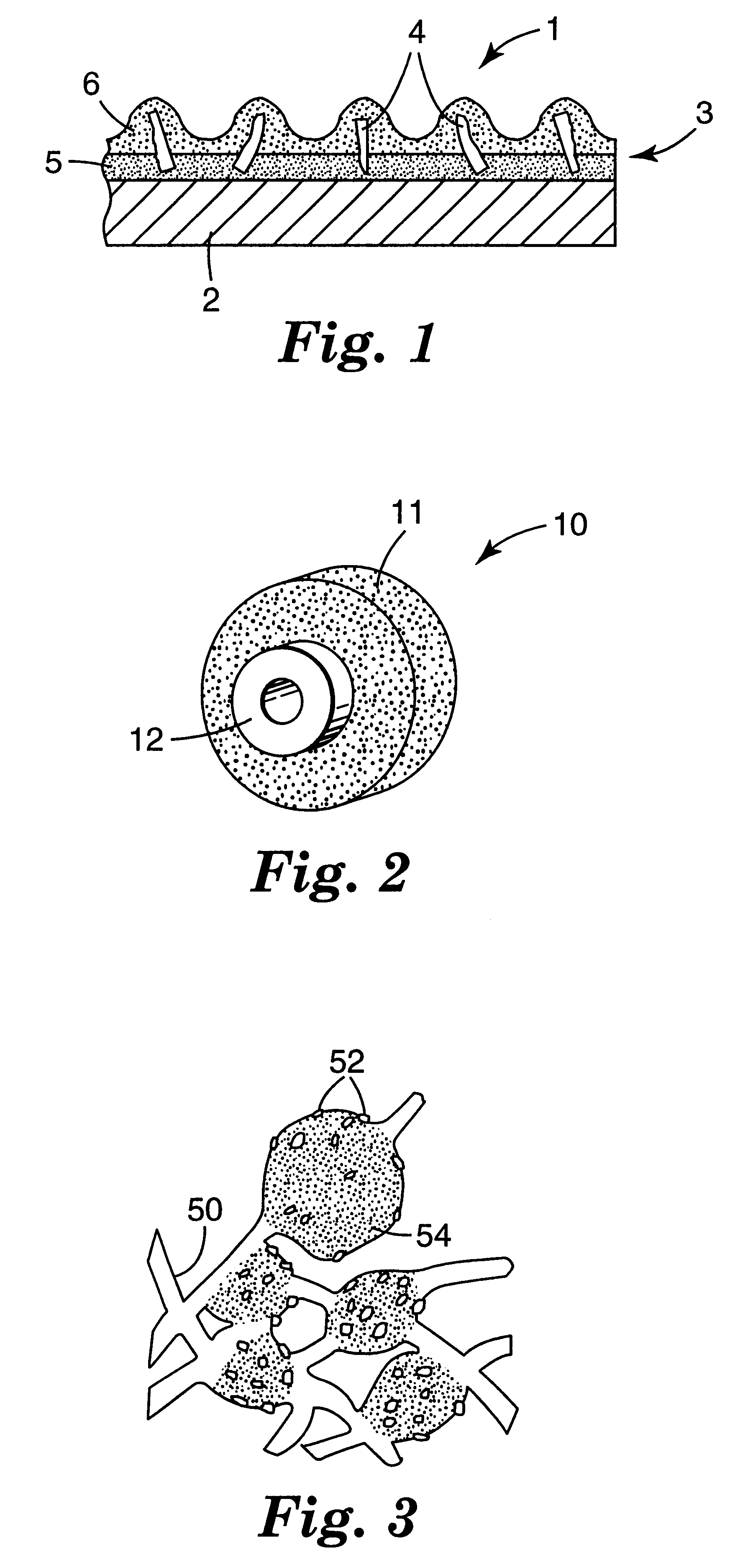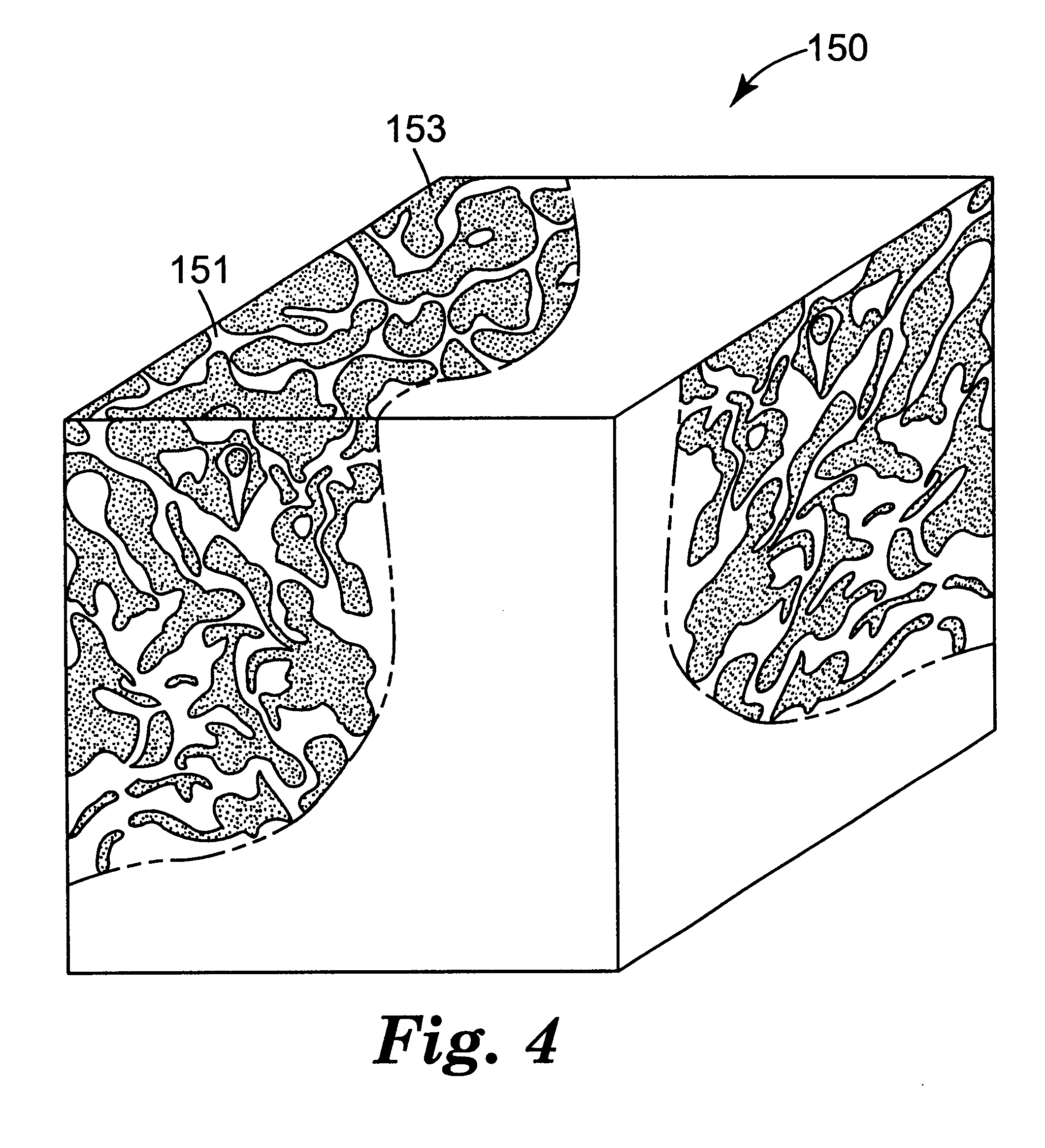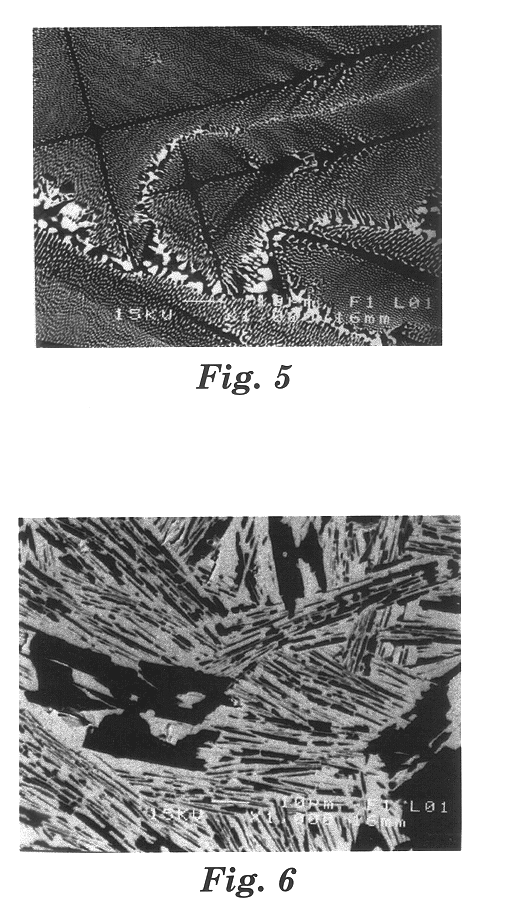Fused AL2O3-MgO-rare earth oxide eutectic abrasive particles, abrasive articles, and methods of making and using the same
a technology of rare earth oxide and eutectic abrasives, which is applied in the field of fused abrasive particles, can solve the problems of significant decrease in abrading performance, complicated process for making sol-gel-derived abrasive particles, and increase the cost of making conventional fused abrasive particles, so as to achieve superior grinding performance and reduce abrading performance
- Summary
- Abstract
- Description
- Claims
- Application Information
AI Technical Summary
Benefits of technology
Problems solved by technology
Method used
Image
Examples
example 1
fused material was crushed by using a "Chipmunk" jaw crusher (Type VD, manufactured by BICO Inc., Burbank, Calif.) into (abrasive) particles and graded to retain the -25+30 and -30+35 mesh fractions (USA Standard Testing Sieves). These two mesh fractions were combined to provide a 50 / 50 blend. Thirty grams of the 50 / 50 blend of -25+30 and -30+35 mesh fractions were incorporated into a coated abrasive disc. The coated abrasive disc was made according to conventional procedures. The fused abrasive particles were bonded to 17.8 cm diameter, 0.8 mm thick vulcanized fiber backings (having a 2.2 cm diameter center hole) using a conventional calcium carbonate-filled phenolic make resin (48% resole phenolic resin, 52% calcium carbonate, diluted to 81% solids with water and glycol ether) and a conventional cryolite-filled phenolic size resin (32% resole phenolic resin, 2% iron oxide, 66% cryolite, diluted to 78% solids with water and glycol ether). The wet make resin weight was about 185 g / m...
example 2
coated abrasive discs were prepared as described in Example 1.
The average microhardnesses of Example 2 abrasive particles were measured by mounting loose abrasive particles (about 10 mesh in size) in mounting resin (obtained under the trade designation "EPOMET" from Buehler Ltd., Lake Bluff, Ill.). The resulting cylinder of resin was about 2.5 cm (1 inch) in diameter and about 1.9 cm (0.75 inch) tall. The mounted samples were polished using a conventional grinder / polisher (obtained under the trade designation "EPOMET" from Buehler Ltd.) and conventional diamond slurries with the final polishing step using a 1 micrometer diamond slurry (obtained under the trade designation "METADI" from Buehler Ltd.) to obtain polished cross-sections of the sample.
The microhardness measurements were made using a conventional microhardness tester (obtained under the trade designation "MITUTOYO MVK-VL" from Mitutoyo Corporation, Tokyo, Japan) fitted with a Vickers indenter using a 500-gram indent load....
PUM
| Property | Measurement | Unit |
|---|---|---|
| size | aaaaa | aaaaa |
| size | aaaaa | aaaaa |
| size | aaaaa | aaaaa |
Abstract
Description
Claims
Application Information
 Login to View More
Login to View More - R&D
- Intellectual Property
- Life Sciences
- Materials
- Tech Scout
- Unparalleled Data Quality
- Higher Quality Content
- 60% Fewer Hallucinations
Browse by: Latest US Patents, China's latest patents, Technical Efficacy Thesaurus, Application Domain, Technology Topic, Popular Technical Reports.
© 2025 PatSnap. All rights reserved.Legal|Privacy policy|Modern Slavery Act Transparency Statement|Sitemap|About US| Contact US: help@patsnap.com



